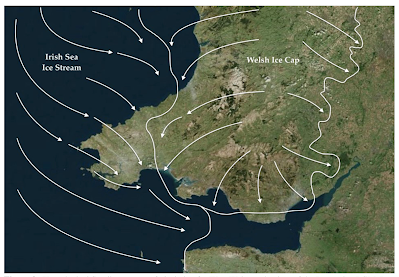In February of this year I published a reappraisal of the Late Devensian ice edge on the eastern flank of the Irish Sea Ice Stream, citing field evidence from all over Pembrokeshire. It was somewhat radical, and at odds with most of the older published literature -- but the article has received no criticism, and all the comments I have received from geomorphologists working in this field have been positive and supportive. I assume therefore that nobody has any evidence that goes counter to mine...........
Let's assume therefore that the idea of the Late Devensian ice-free enclave in mid and south Pembrokeshire is now dead.
Quaternary Newsletter Vol. 158, February 2023, pp 5-16.
https://www.qra.org.uk/mp-files/qn158_1_late-devensian-ice-free-corridor-in-pembrokshire.pdf/
So what exactly was the situation in the Bristol Channel? Was the north coast of Devon affected by glacier ice around 26,000 years ago? Did Irish Sea ice affect the south coast of Gower and the coasts of Glamorgan? Was there a vast ice-dammed lake (Lake Maw) in the Bristol Channel and in the Severn Estuary, and might it have overflowed via the Chard Gap into the Axe Valley? That idea was promoted in all seriousness by Prof Nick Stephens and others, and hotly disputed by Kidson, Green and others -- but they were talking about Saalian or Anglian events, with much discussion revolving around the interpretation of the gravel pits at Broom, in the Axe Valley.
I'm intrigued by the possibility that the high erratics above Ilfracombe might have something to do with the Devensian, and that the strange meltwater features in the Valley of the Rocks might have something to do with a large body of water with a surface high above present sea level. Watch this space........



No comments:
Post a Comment
Please leave your message here